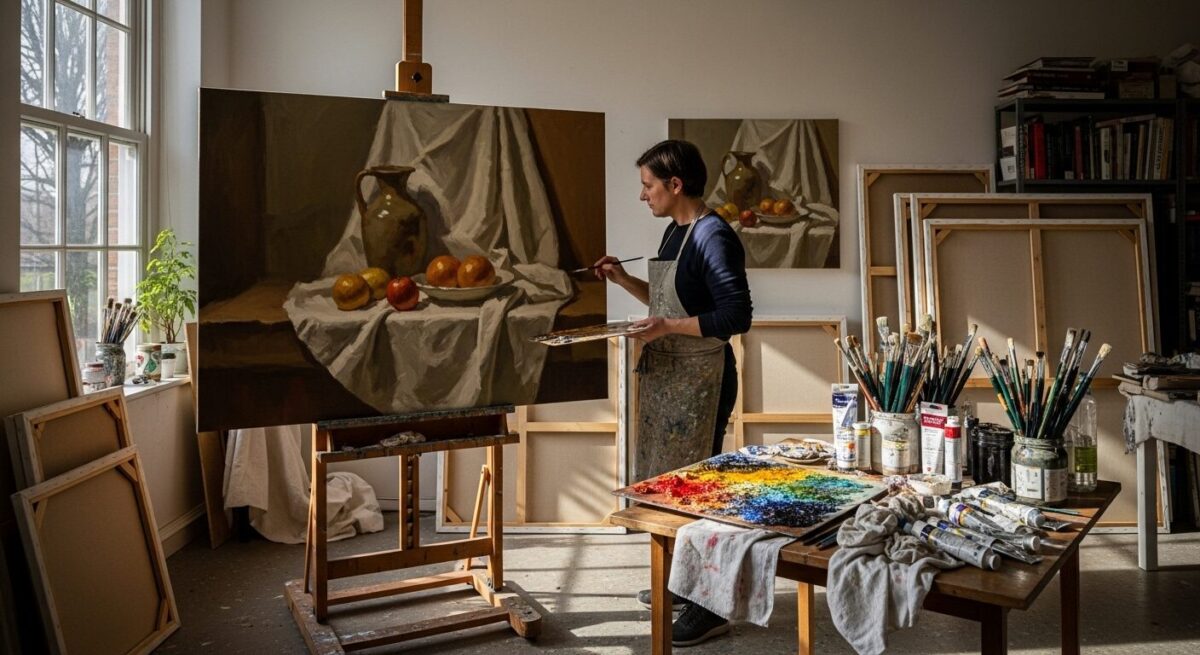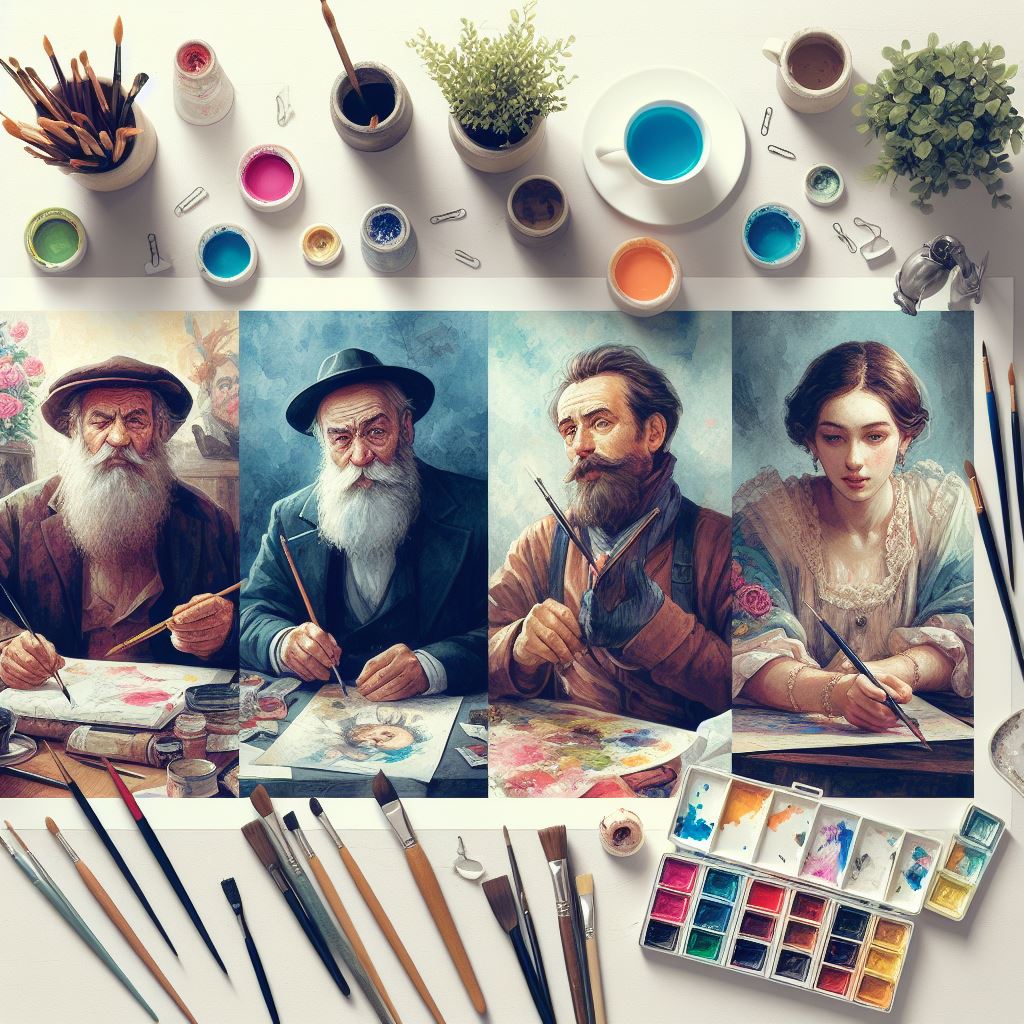Have you ever stared at a beautiful, finished oil painting and wondered, “How did they do that?” While the masters had their secret techniques, a few core principles have remained a cornerstone of oil painting for hundreds of years. These aren’t just stuffy, old-school ideas; they are critical guides that keep your artwork from cracking, peeling, and looking like a mess down the road. They are the secrets to creating a painting that will last for generations, looking just as good as the day it was finished. So, what are the 3 rules of oil painting, and why are they so important? Let’s dive in and unlock the secrets to lasting oil paintings.

Key Points Summary
- What they are: The three core principles for a durable oil painting are Fat Over Lean, Thick Over Thin, and Flexible Over Brittle.
- Why they’re important: These rules ensure that each layer of paint dries at a similar rate and maintains the correct flexibility, preventing the top layers from drying and cracking before the layers underneath.
- The Science: Oil paint dries by oxidation, which is a chemical reaction that makes the oil expand slightly. If a fast-drying, rigid layer is on top of a slow-drying, flexible layer, the bottom layer will expand later, causing the brittle top layer to crack.
- “Fat” equals oily: Paint with a lot of oil or an oil-based medium.
- “Lean” equals less oily: Paint thinned with a solvent like turpentine or a fast-drying medium.
- The takeaway: Following these simple rules is one of the most important things you can do to make your oil paintings last.
The Golden Rule of Oil Painting: Fat Over Lean
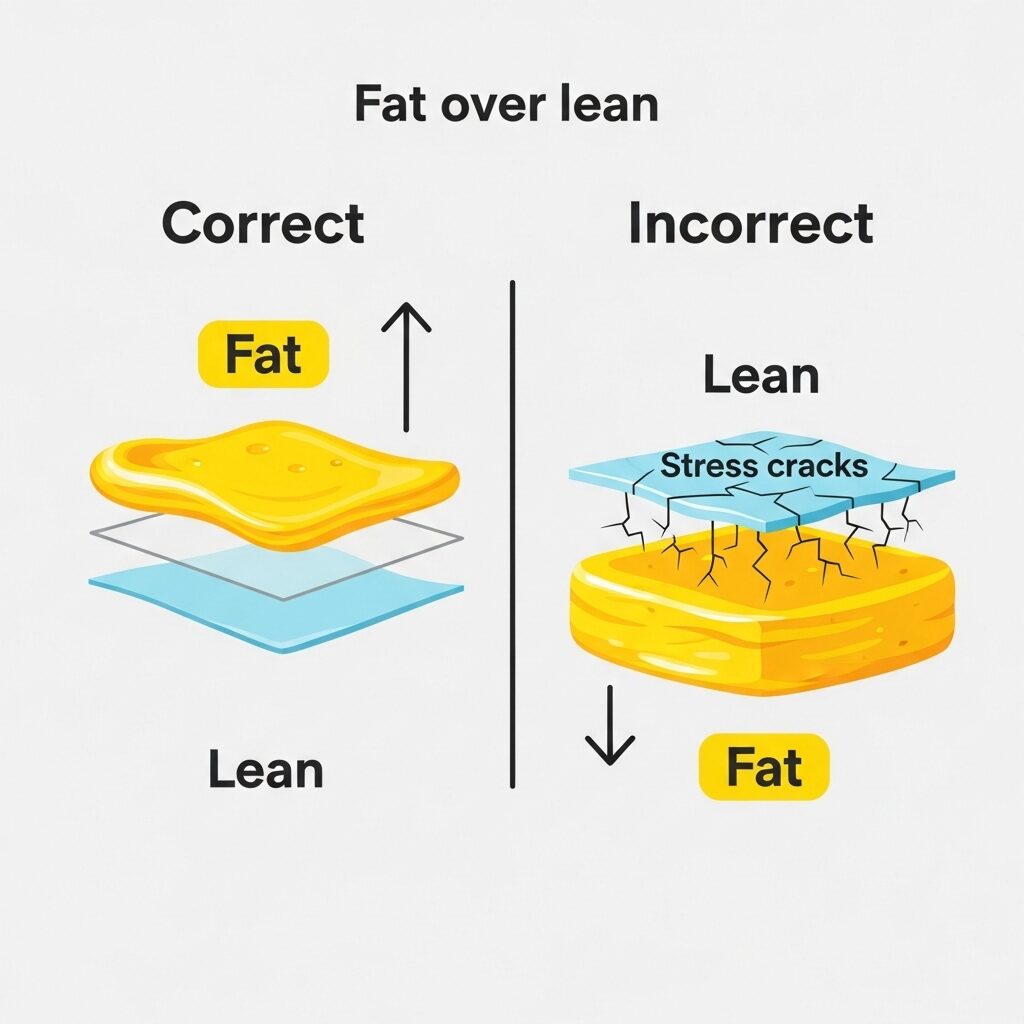
The “fat over lean” rule is so important that it’s often called the golden rule of oil painting. Imagine you’re building a sandcastle. If you put a heavy, wet layer on top of a dry, crumbly one, what happens? The whole thing crumbles, right? The same idea applies to oil painting. This rule is all about creating a stable structure for your painting. You’re basically building a house of paint, and you want to make sure the foundation is solid.
In oil painting, “fat” refers to the amount of oil in your paint. The more oil, the “fatter” the paint. “Lean” means the opposite—less oil. This is usually achieved by thinning the paint with a solvent like turpentine or mineral spirits.
The rule states that you should always apply a fatter layer of paint over a leaner one. So, your first layer on the canvas, the “leanest” layer, should be thinned with a solvent. As you add more layers, you gradually increase the amount of oil, making each new layer “fatter” than the one below it.
Why does this work? It all comes down to how oil paint dries. Oil paint doesn’t just dry by evaporation like acrylic or watercolor. Instead, it dries through a chemical process called oxidation, where the oil absorbs oxygen from the air. This process causes the oil to expand slightly as it hardens. Fatter layers with more oil dry slower and are more flexible. Leaner layers with less oil dry faster and are more rigid.
If you put a fast-drying, brittle layer on top of a slow-drying, flexible one, the slow-drying layer will continue to move and expand underneath the rigid top layer. This stress causes the top layer to crack, creating what artists call “crackle” or “alligatoring.” While some artists have intentionally used this effect, it’s generally not a good sign and can lead to the paint flaking off entirely over time.
You can learn more about this in our guide to oil painting for beginners, which walks you through setting up your palette and creating your first masterpiece.
The Second Rule: “Thick Over Thin”
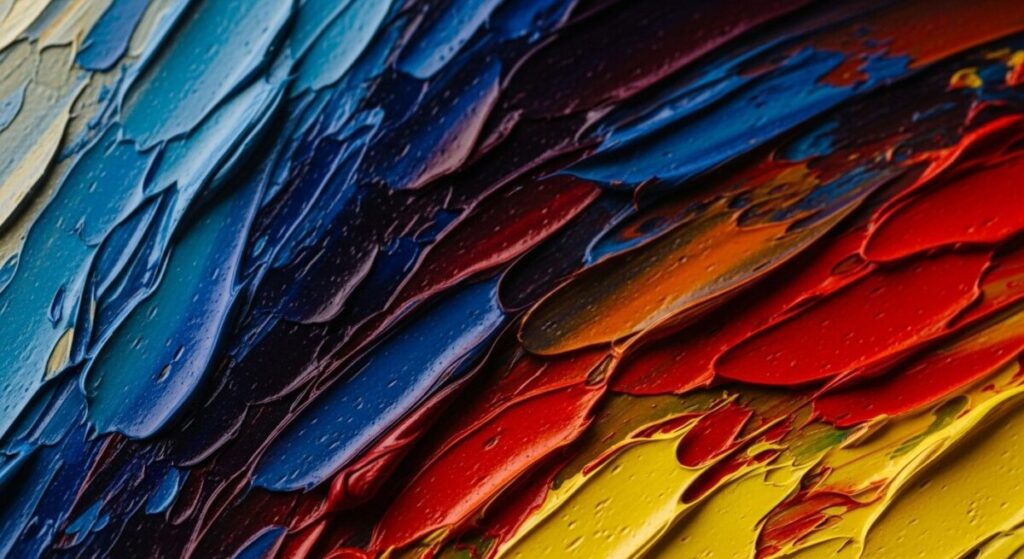
The “thick over thin” rule is a close relative of “fat over lean.” It’s a common-sense principle that simply means you should apply thicker layers of paint over thinner ones. This rule works hand-in-hand with fat over lean because thinner layers often dry faster and have less oil content, while thicker layers tend to contain more oil and take longer to dry.
If you apply a thin layer of paint on top of a thick, gooey one, the thin layer will dry quickly and become rigid. As the thick layer underneath continues to dry and shrink or expand over time, the rigid top layer will have no choice but to crack. By building up your paint from thin to thick, you create a strong, stable structure.
This is especially important when you’re working with impasto, which is the technique of applying thick, textured strokes of paint. The initial layers should be thin and simple, followed by thicker, more expressive strokes.
The Third Rule: “Flexible Over Brittle”
The final principle, “flexible over brittle,” is a more technical way of explaining the first two rules. It’s all about the physical properties of the paint layers. A “lean,” “thin” layer of paint is generally more brittle and less flexible than a “fat,” “thick” one.
This rule is crucial for the long-term health of your painting. A painting is not a static object; it’s affected by changes in temperature and humidity, which cause the canvas and the layers of paint to expand and contract. By ensuring each new layer is more flexible than the one below it, you create a painting that can “breathe” with these changes without cracking.
“The art of painting is a constant battle between what you see and what you know. The ‘3 rules of oil painting’ are among the things you must know, so you can focus on seeing.”
A Table of the 3 Rules in Action
To make these concepts crystal clear, here’s a simple table to help you understand how the rules work together.
| The Rule | What It Means | Practical Application |
| Fat Over Lean | Apply paint with more oil over paint with less oil. | Start with a solvent-thinned underpainting; finish with paint straight from the tube or mixed with linseed oil. |
| Thick Over Thin | Apply thicker layers of paint over thinner ones. | Begin with a thin, fluid wash and build up to thicker, textured strokes (impasto). |
| Flexible Over Brittle | Use mediums that make layers more flexible. | Ensure each new layer is more flexible (slower-drying) than the rigid (fast-drying) one underneath. |
Master Artists and the Three Rules of Oil Painting
| Artist | Era and Movement | Noted for Following the Rules | Example Artwork (indirect painting) |
| Jan van Eyck | 15th Century, Early Netherlandish | Considered a pioneer in the use of oil paint in layers, building up depth and luminosity through glazes. His techniques were foundational to the rules. | The Arnolfini Portrait |
| Titian | 16th Century, Venetian School, High Renaissance | His layered approach to color and light, often using multiple glazes, epitomizes the “fat over lean” rule to achieve vibrant, complex effects. | The Rape of Europa |
| Rembrandt van Rijn | 17th Century, Dutch Golden Age | Famous for his masterful use of impasto (thick paint) for highlights and texture, applied over thin, dark underlayers, demonstrating “thick over thin.” | The Jewish Bride |
| Johannes Vermeer | 17th Century, Dutch Golden Age | His work is renowned for its luminosity, achieved through a painstaking process of applying multiple thin, translucent glazes (“slow over fast”) to create subtle shifts in light and shadow. | The Milkmaid |
| Peter Paul Rubens | 17th Century, Flemish Baroque | Known for his dynamic and vibrant compositions, Rubens often used a layered approach, building from thin, fast-drying underpaintings to rich, thick final layers. | The Raising of the Cross |
Not Just Rules, but a Philosophy
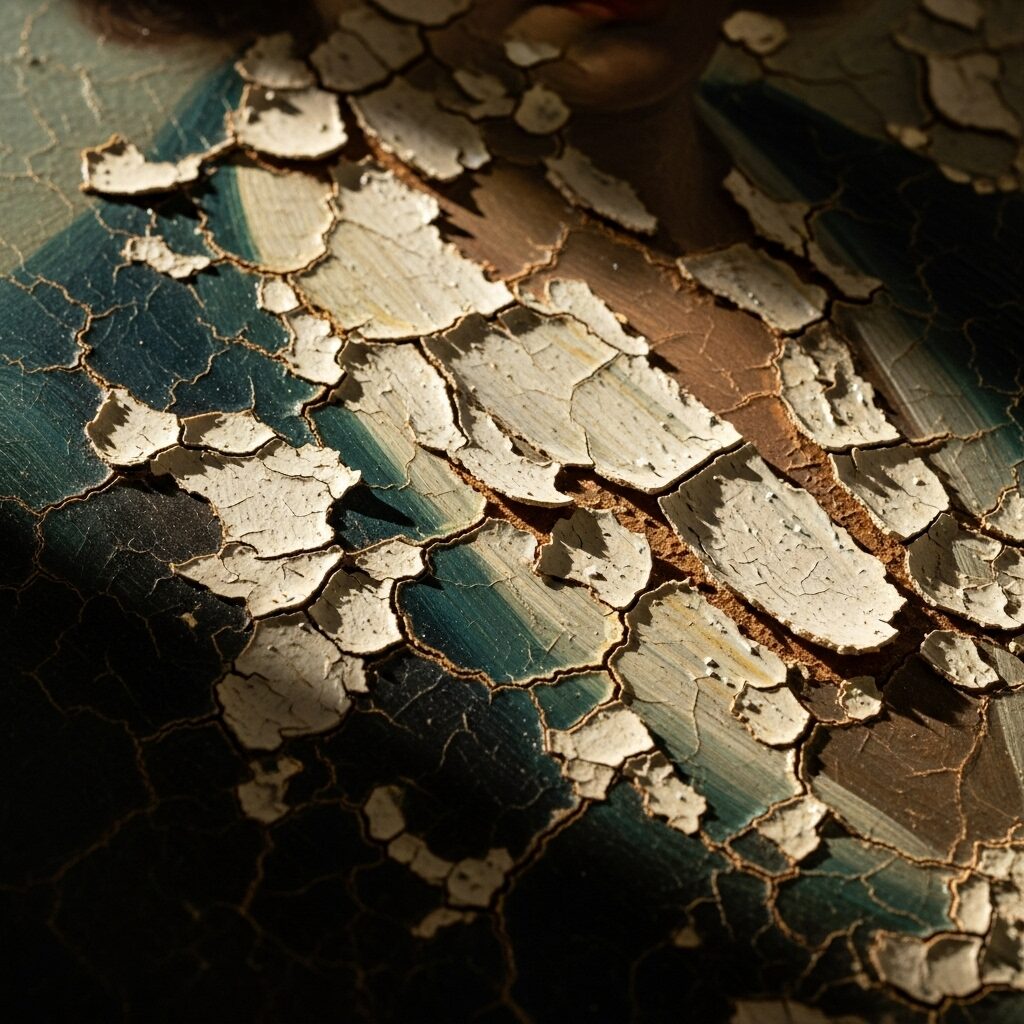
The 3 rules of oil painting are a beautiful example of how an understanding of materials can lead to better art. It’s not just about avoiding cracks; it’s about building a painting with intention and care. Artists who ignore these rules might create a work that looks stunning for a few years but will eventually show its age in all the wrong ways. For instance, think about the great masters of the Renaissance and beyond. Their paintings, like those of Rembrandt or Titian, still look incredible today because they understood and followed these principles.
There are many other tips and techniques that go into creating a masterpiece. Our guide to mastering art and technology shows how modern tools, from digital sketching to AI, can help you plan your oil paintings with these rules in mind.
One of the most satisfying parts of painting with oils is seeing the layers build on one another. The transparency and depth you can achieve with multiple, carefully applied layers is what makes the medium so special. If you’re looking for inspiration, check out our piece on the art of still life painting, where we explore how artists use layers to create stunningly realistic textures and light.
Going Against the Grain: When to Break the Rules?
Like any rule in art, these aren’t absolute laws. Some artists intentionally break them for specific effects. However, for a beginner, it’s a good idea to stick to them as a solid foundation. Once you have a deep understanding of how the paint and mediums work, you can start to experiment. But for now, think of them as the ultimate guide to creating a stable, long-lasting work of art.
If you’re interested in other painting styles, you can also explore how these principles, or variations of them, apply to different mediums. For example, our article on understanding different art styles can give you a broader perspective on how artists approach their work.
Another important rule in painting, no matter the medium, is to ensure your brushes are in good condition. You can find some useful advice on this in our guide to art materials and tools.
Why these rules are so crucial for oil painting
Unlike other mediums, oil paint takes a long time to dry. A thin layer can be dry to the touch in a day or two, but a thick, “fat” layer can take weeks, or even months, to fully cure. This is why the 3 rules of oil painting are so crucial. It’s all about managing these different drying times. By ensuring the bottom layers dry faster and are less flexible than the top layers, you prevent the cracking that happens when a rigid, dry top layer is stretched by a still-drying, expanding bottom layer.
This guidance is a testament to the old-school wisdom that has been passed down through generations of artists. It’s a bit like learning to play an instrument; you have to practice the scales before you can improvise a masterpiece. By mastering these rules, you’re not just preventing your painting from cracking—you’re learning to think like a professional artist, planning your work from the ground up to ensure it stands the test of time.
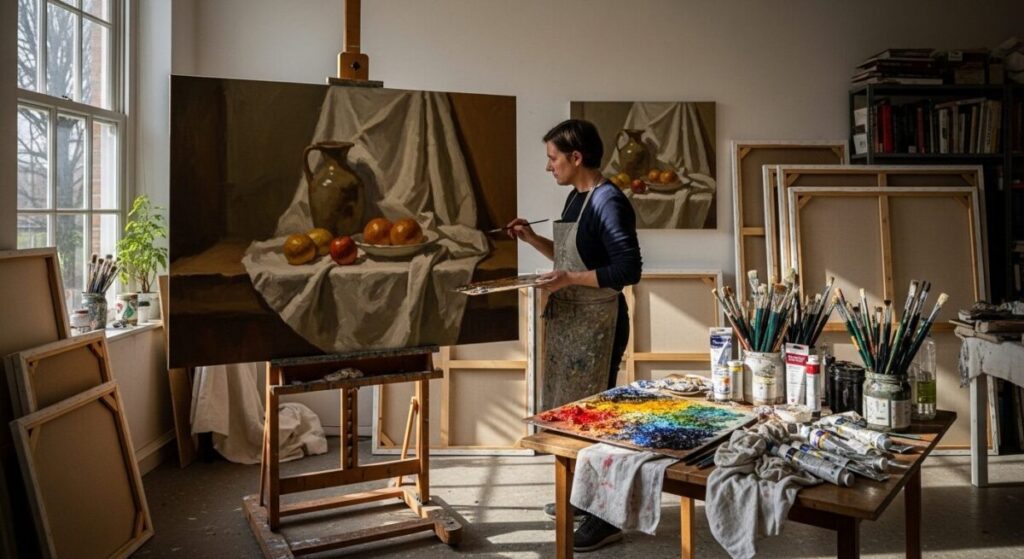
FAQs: 3 Rules of Oil Painting
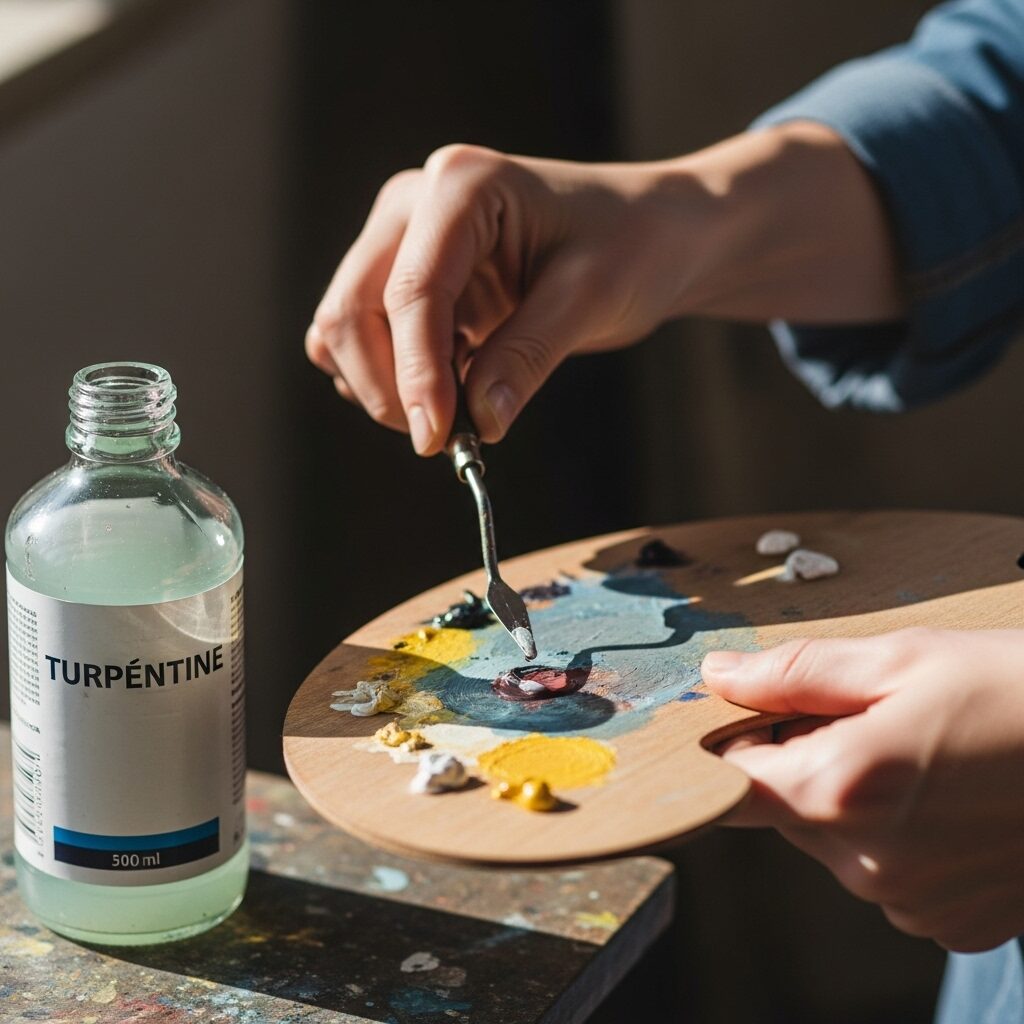
Q: What is a fat medium in oil painting?
A: A “fat” medium is any additive that increases the oil content of the paint, making it more flexible and slower to dry. The most common fat medium is linseed oil, but others like poppy oil, walnut oil, or special commercial mediums are also used.
Q: Can you paint a lean layer over a fat one?
A: Generally, no. Painting a lean layer over a fat one is the primary cause of cracking and delamination in oil paintings. The fast-drying, brittle lean layer on top will crack as the slower-drying, flexible fat layer underneath continues to expand and move.
Q: How do you make oil paint “lean”?
A: You make oil paint “lean” by thinning it with a solvent like turpentine or odorless mineral spirits. This reduces the proportion of oil in the paint, making it dry faster and creating a less flexible, more rigid layer.
Q: What is the benefit of the fat over lean rule?
A: The main benefit is creating a stable, durable oil painting that won’t crack or peel over time. It ensures that each layer is appropriately flexible for the layer below it, allowing the painting to age gracefully and last for centuries.
Q: Is the fat over lean rule a myth?
A: While some artists may debate the strict application of the rule in all cases, the underlying principle is scientifically sound. The drying process of oil paint (oxidation) makes the fat over lean rule a fundamental principle for preventing cracking and ensuring the longevity of an artwork. Ignoring it, especially with thick applications of paint, is a significant risk.
Citations:
- Gottsegen, Mark. The Painter’s Handbook: A Complete Reference, Revised and Expanded Edition. This book is a go-to resource for artists, providing a scientific and practical explanation of art materials, including the chemistry behind the 3 rules of oil painting.
- Mayer, Ralph. The Artist’s Handbook of Materials and Techniques. A classic in the field, this comprehensive guide covers everything from pigments to varnishes, with detailed sections on oil painting mediums and the importance of layering.
- National Gallery of Art, “Analyses of Paint Media”. The National Gallery provides excellent technical notes on the properties of oil paints and the traditional methods used by old masters to ensure the stability of their work.
- Winsor & Newton, “Fat over Lean: What it is and why it’s so important”. As one of the world’s leading art supply manufacturers, Winsor & Newton offers practical advice and articles on how to use their products and apply key principles like fat over lean.
- Golden Artist Colors, “Oil Over Acrylic Guidelines”. Golden, a well-respected manufacturer of artist materials, provides in-depth technical information on the chemical and physical properties of paint, offering a modern perspective on traditional techniques.
- Tate Museum, “Oil Paint”. The Tate’s glossary on art materials offers a clear, concise explanation of oil paint, its properties, and the historical context of its use, including the importance of proper layering.

